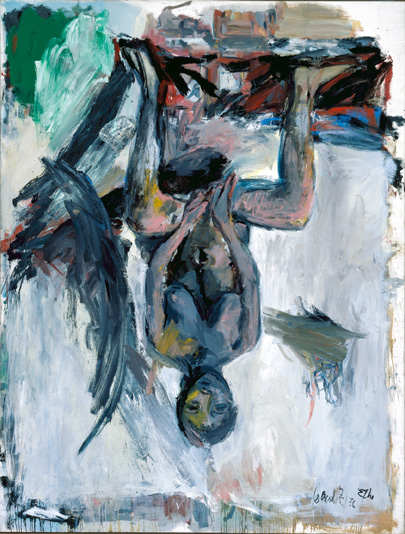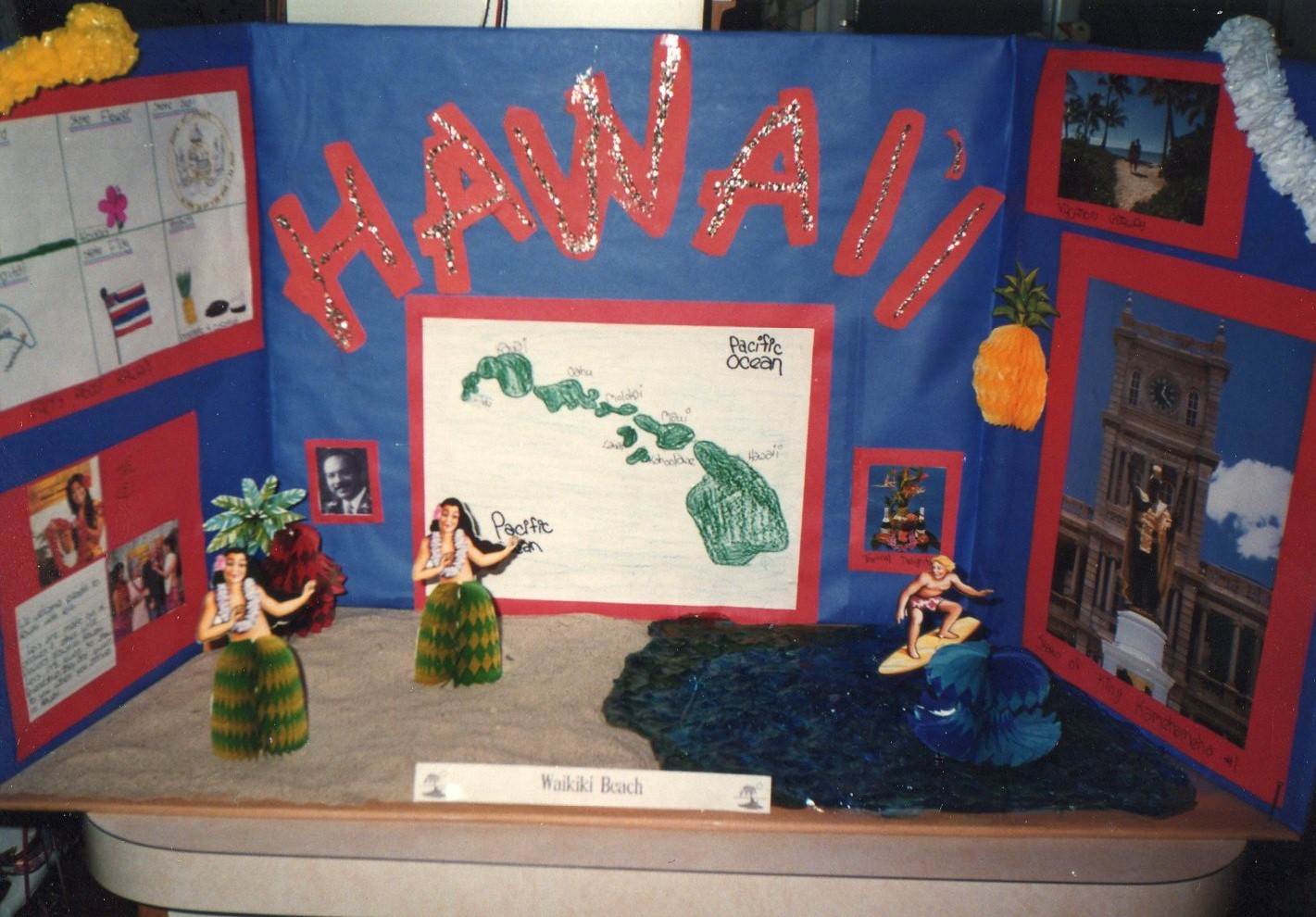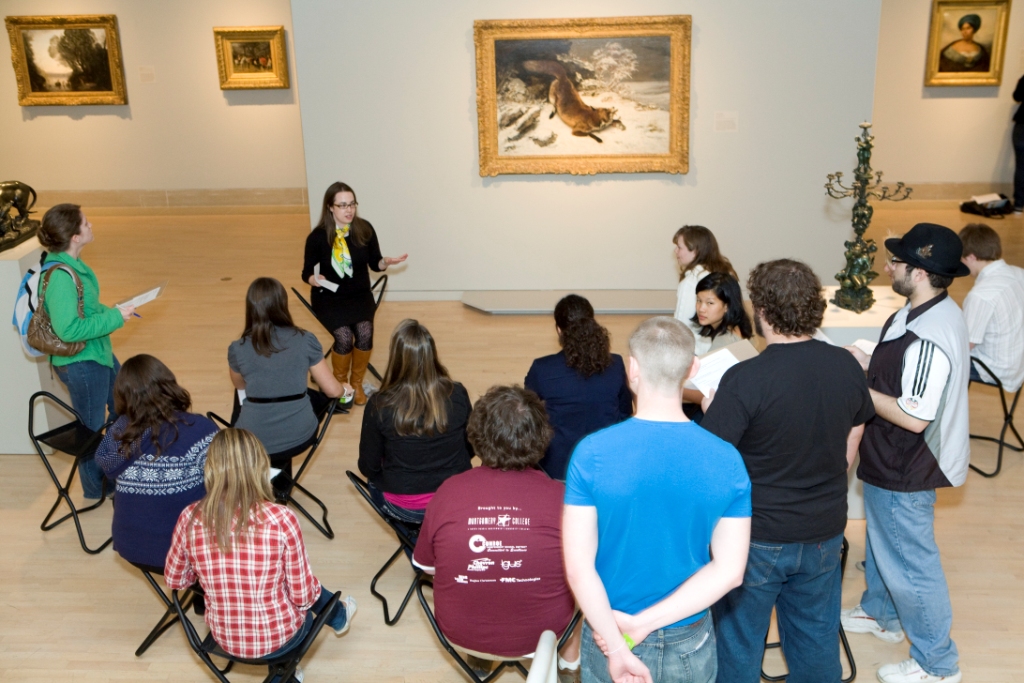Have you ever stopped to think about that moment when you decided to make art an important part of your life? I bet for some people the spark was ignited by a single educator, or perhaps a single project that they created in their young lives. My fellow bloggers and I sat down and thought about what art related experiences we remember from our past. I wanted to post them here as nice reminder to all educators that the experiences you are creating are not only influential to your students now, but will likely become a memorable project that they will carry with them for the rest of their lives!
One of my most memorable projects was making a miniature haunted house in fouth grade art class. We partnered up and used whatever materials we could find (within the art room, of course). I remember that half the fun was creating a “script” in our minds of what would happen to the person once they set foot into our shoebox-sized house. Once we were finished making bloody walls and cobwebbed hallways, the storytelling element really kicked in. Describing the “horrors” to our fellow classmates was one of the best Halloween art activities that I can remember!
Here are some childhood memories from the Teaching Programs staff:
“The best art teacher I ever had was my high school ceramics teacher Mr. Block. Mr. Block was a huge inspiration to me and one of the main reasons I studied art in college. The most memorable project was when our class participated in the Dallas Empty Bowls Event. Empty Bowls is a program designed to help end hunger by bringing local artists and restaurants together. When you go to an event, you buy a hand-made bowl, and then you get all the food you want! The best part is that all the proceeds go to the North Texas Food Bank. Our entire class made bowls for this event, and I still have the bowl that I purchased over ten years ago. This project showed me that creating art can be fun and expressive, but it can also be for a good cause.” – Loryn
“The childhood art activity that stands out to me the most is an upside-down painting a la Georg Baselitz. I was probably in second or third grade and attending art camp at the Modern Art Museum of Fort Worth (in the Museum’s old building), and we had explored/discussed Baselitz’s Elke (1976). I used to place all my stuffed animals on their heads because I thought they looked better that way, so I was thrilled when I my art camp assignment was to paint my dog upside down! I remember how proud I was of my finished product and of my new knowledge of the artist Baselitz.” – Andrea

Elke, Georg Bazelitz, 1976, Collection of the Modern Art Museum of Fort Worth, Museum purchase, The Friends of Art Endowment Fund
“My favorite kind of activities in school didn’t have too many directions. I always had the most fun when I got to use my imagination and make it up as I go. My most memorable project was in elementary school, when we were given clay tiles to decorate however we wanted. I decided to paint myself yelling to my mom what I thought at the time was a sassy yet sweet sentiment, “Wake up, I love you!” (imagine ‘wake up’ being said like hellooo or duh). I had some pretty sweet shoes back in the day, and on that particular day I just happened to be wearing my platform sneakers. The six-inch rubber heels were carved with flower designs that I decided to press along the edges of the tile, printing the pattern onto the clay. I remember feeling really proud of coming up with an unconventional idea for decorating my tile.” – Hannah
“In the fourth grade, I had to make a large display for one of the fifty states. My state was Hawaii, and my greatest artistic achievement was making a diorama of Waikiki Beach using sand (from my backyard sandbox) and Dep hair gel. The gel was electric blue (it was 1989), and it was the perfect color for the waves of Waikiki.” – Shannon
“One of my favorite art projects was a papier mâché penguin I made in high school. I loved the process of creating the form with wadded up newspaper, tape, and cardboard. I also loved the messiness of applying the wet papier mâché strips to create the exterior of the sculpture. As I finished with several coats of paints, I decided to give my penguin green eyes, disregarding the possibility (and fact) that penguins do not actually have green eyes. I eventually gave the penguin sculpture to my older sister; it now lives in her garage.” – Melissa
A great BIG thank you to all of the hard-working educators out there for helping us construct our creative memories!
Jessica Kennedy
McDermott Intern for Gallery Teaching

